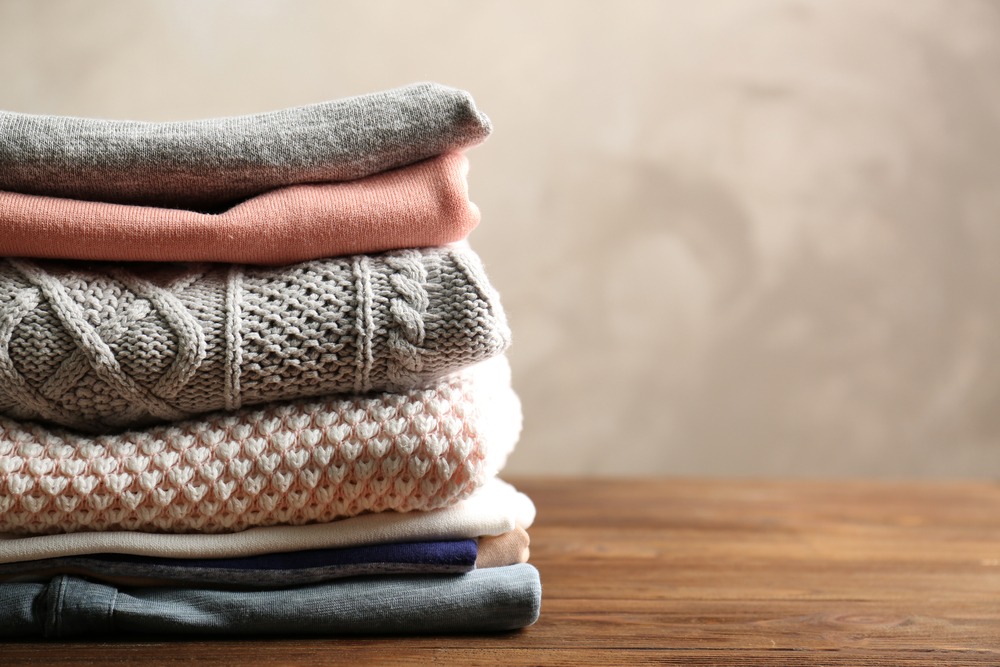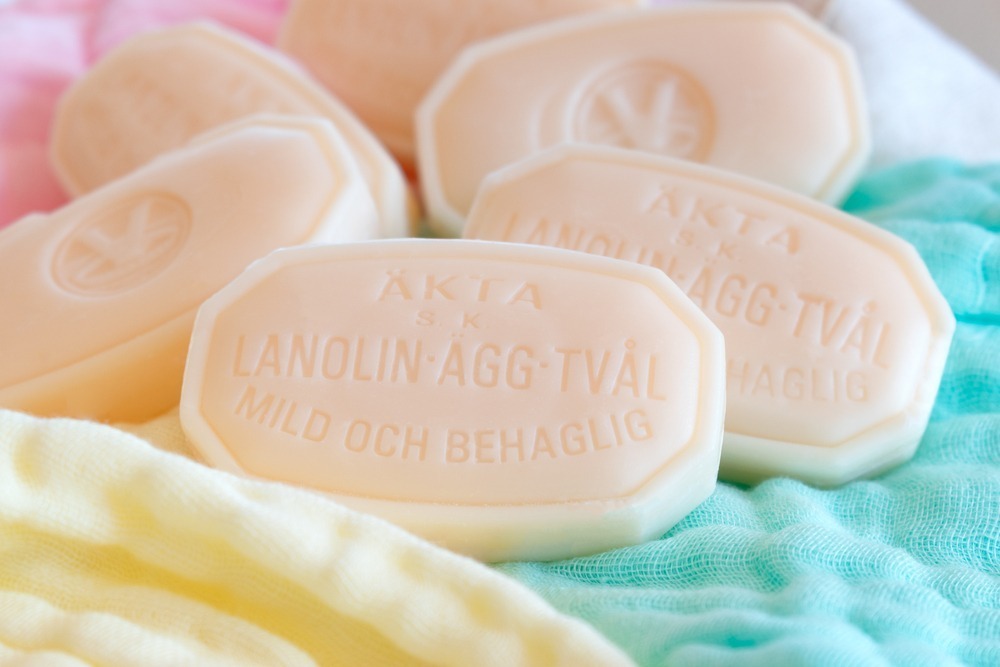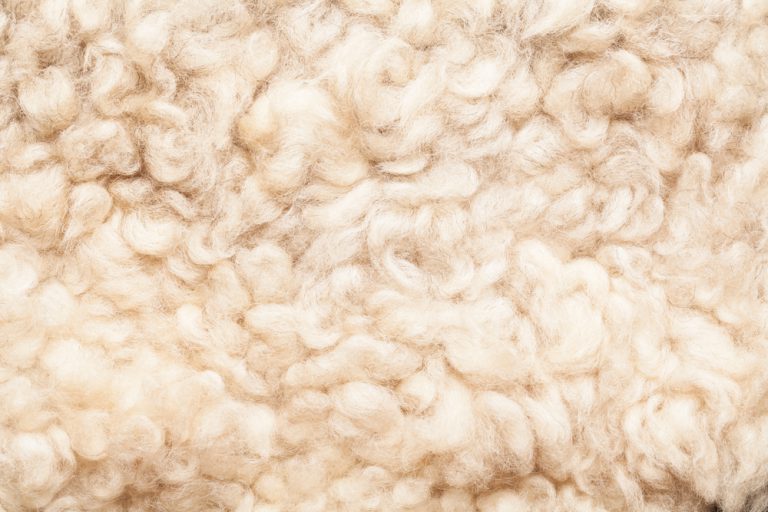Britain has a long and storied history with sheep dating back to the Bronze Age. They were initially bred for their meat and milk, but also so they could be sheared for their animal fibres – wool.
Although sheep shearing is a long and tedious process, farmers are willing to do it for the highly-coveted material. In fact, the British wool industry produces over 70,000 tonnes of wool each year, making it one of the largest producers globally.
You may think all that wool goes towards clothing. This is partly true, but there’s a whole host of different use cases for the material.
This article will explain what they are as well as what makes wool so sought-after.
What are the top 9 uses of wool?
Different sheep breeds produce slightly different types of wool, which means it has a wide variety of uses, including the following:
- Clothing
- Fertiliser
- Mulch
- Heat and sound insulation
- Arts and crafts
- Bedding, quilts, duvets, and blankets
- Upholstery
- Skincare, hair care, and other cosmetics
- Brick reinforcement
That’s a pretty broad range of uses, right? Let’s explain how and why wool is used in each of those in more detail.
1. Clothing

One of the primary uses for wool is in clothing. Most people’s wardrobes will have at least a few items made from the material, such as sweaters, fleece, socks, t-shirts, etc., and it’s a particularly popular fabric for the winter months. This is because wool has insulating properties that trap air to create a thermal layer, keeping your body warm even in the rain.
On the flip side, wool is also used heavily in activewear. The wool fibres can extract excess heat away from your skin to ensure you don’t overheat whilst exercising. Therefore, it’s not uncommon to find baselayers and leggings made from wool.
The material also has moisture-wicking properties, meaning that it helps pull water away from your skin, thus cooling your body down. This is especially the case with merino wool which is sheared from merino sheep.
Merino wool is known for being incredibly soft to the touch and antibacterial. It prevents the build-up of mould, mildew, and bacteria, which can easily build up when under strenuous exercise. This ensures that smelly odours don’t stick to your clothes, and you can even go multiple wears without noticing a difference.
Wool garments are also highly durable. The fabric is slightly elastic in nature but reverts to its original shape easily, meaning it won’t shrink in the wash, become overstretched, or leave wrinkles. As such, wool clothing tends to last a lot longer than its cotton or synthetic alternatives.
Extreme conditions
To piggyback off the previous point, wool is often the preferred material of choice when it comes to clothing for extreme conditions. This is due to its resistance to shrinking or melting under high temperatures and its ability to withstand odours and bacteria.
For instance, wool is flame retardant up to 600°C. As such, wool tops were used by NASA scientists on the International Space Station and have long been the fabric of choice for firefighter uniforms.
2. Fertiliser
Perhaps surprisingly, wool can be transformed into small pellets, which are then used as eco-fertiliser. It may seem odd to use wool for this purpose, but it makes an excellent fertiliser due to the contents inside its fibres. Wool contains nitrogen, phosphorous, and potassium, which are critical ingredients in compost and quality nutrients for plants.
Wool is bio-degradable, but it degrades over a long period of time – between two months to three years, depending on the wool fibres. This means that plants have a slow-releasing supply of necessary nutrients in their soil, fostering steady and consistent growth for months on end.
Also, wool and the pellets it comes in can absorb up to four times its weight in water. Therefore, the plants and their surrounding soil don’t need to be watered as often, which can be great for times of drought or when water needs to be saved for other uses. These pellets then biodegrade themselves, ensuring the entire process is completely eco-friendly and sustainable.
3. Mulch
Mulch is used to improve soil fertility, block the growth of weeds, and conserve the soil’s moisture so it doesn’t dry out. You see a lot of synthetic mulch these days, but you can swap it out for wool instead.
We’ve already mentioned how wool makes an excellent fertiliser due to its ability to provide key nutrients to the soil and retain moisture the plant can feed off. These properties also make it a great organic option for mulch, optimising conditions for your plant to grow healthy. Wool can also act as a physical barrier to prevent slugs and plants from eating your crop.
4. Heat and sound insulation

Most new-build properties are well insulated, but the same can’t be said for homes and structures built before the 1990s. They simply don’t have enough insulation and thus have a low energy-efficiency rating.
If you want to improve your home’s energy efficiency rating, most options on the market will consist of installing synthetic insulation. However, an organic and sustainable alternative is to use wool insulation.
It makes sense; sheep use their wool as a barrier from the cold to keep themselves cosy, and the same can be applied to your house. Wool’s thermal properties of trapping a layer of air will keep your home warm in the winter. But it also works the other way to keep your home cool during the summer months as it wicks away excess moisture and heat.
Wool also works well as sound insulation. The shape and structure of the wool fibres mean that it can isolate sound vibrations, thus absorbing the sound and allowing less to pass through.
It’s worth noting that since wool is biodegradable, more wool will be required than if you were to use a synthetic alternative, but it will be just as – if not more – effective.
5. Arts and crafts
Imagine someone needle felting, knitting, or crocheting. Chances are you’ll picture someone working with wool. This is because when it comes to crafts and embroidery work, wool has been a staple material of choice for centuries.
The versatile material is often used to make clothing items such as hats, gloves, scarves, etc., but also for household items such as bath towels, table covers, floor mats, and more.
6. Bedding, quilts, duvets, and blankets
Sleep is crucial for your brain and body to function optimally, and getting a lack of it can be detrimental to our overall health. It is reported that one in five UK citizens suffer from a lack of sleep, a whopping 20% of the population.
There are various downsides to this. Lack of sleep is known to cause reduced energy, attention span, physical strength, slowed thinking, problems with memory, weight gain, over-consumption of caffeine, weakened immune system, and much more.
In order to tackle this, you want to prime your sleep environment as much as possible, and one way to do this is to use the right bedding. Bedding is often made from cotton, polyester, or a mix of both, which can sometimes irritate the skin or cause you to be restless at night. However, these materials can be swapped out for wool.
Wool is a fantastic bedding material since it is super lightweight, breathable, and moisture-wicking. This means that it can regulate your body temperature at night to ensure you’re keeping yourself warm when it’s cold and cool when it’s hot. Also, most quilts these days consist of wool fibres due to their temperate-regulation properties.
This is also proven by research conducted by the University of Leeds, where wool was able to maintain the ideal body temperature for sleep, 35.1°C, the longest. So, if you want to create an ideal sleep environment where you aren’t waking up at various stages of the night, use wool bedding, quilts, duvets and blankets.
7. Upholstery
Wool has been used in upholstery and furnishings for a long time, and it’s no surprise why. It provides a good combination of comfort and durability, ensuring that your sofas, couches, carpets, rugs, blinds, curtains, cushions, etc., not only look and feel the part but also stand the test of time.
It’s a popular choice because wool tends to recover its shape and feel even after cleaning. Its antibacterial and antimicrobial properties also keep it filth-free. In fact, most public transport and aircraft seats are made from wool or wool-blend fabrics for this very reason.
It also absorbs colours and dyes exceptionally well, ensuring you can design your space exactly how you want. So next time you’re looking to spruce up your home with a new interior design, consider using wool as your fabric choice.
8. Skincare, hair care, and other cosmetics

Wool is extremely sustainable. Even its by-products can be put to use, and lanolin is an excellent example of this. Lanolin is an oily, waxy substance derived from sheep’s wool. Instead of letting it go to waste, it can be used for a wide variety of purposes.
For instance, lanolin is heavily used in the cosmetic industry with products like shampoos, oils, sprays, creams, soaps, etc. Lanolin has moisturising and conditioning properties, making its use particularly prevalent in products that help combat dry skin and hair.
Its also used in the processing and treating of leather and textiles, as a lubricant for metals, and as a glue for adhesive tape.
9. Brick reinforcement
Researchers from Spain and Scotland tried to find a way to make stronger and more environmentally friendly bricks using raw materials. One of the materials they tested was wool, and they discovered that a combination of wool, seaweed, and clay was found to do just that.
These hybrid bricks were found to be strong, non-toxic, and entirely sustainable due to the abundance of wool and seaweed in nature. Although mainstream brick manufacturers haven’t adopted it, it’s an option that we could certainly see gain prevalence in the future.
What are the advantages of using wool?
- Sustainable – Wool is natural, renewable, biodegradable, and eco-friendly
- Antibacterial, antimicrobial, and stain resistant – The scaly and waxy wool fibres prevent the growth of bacteria, mould, and mildew, ensuring that it doesn’t smell, stain, or get damaged.
- Natural UV protection – Wool has a UV protection factor of as much as 30, protecting you from the sun’s rays.
- Durable – Wool has elasticity and can bend 20,000 times without breaking. On the other hand, cotton breaks after 3,000 bends, and silk after only 2,000 bends, making it extremely durable.
- Thermal – It traps air to create a layer of warmth, keeping your body warm when it’s cold – even when it’s raining or wet.
- Moisture-wicking and breathable – Its fibres extract heat and moisture away from your body which can help you stay cool and prevents overheating.
Final thoughts
Wool is a special material with a wide variety of use cases, including clothing, fertiliser, insulation, cosmetics, brick reinforcement, and more.
This is due to its natural properties. It is antibacterial, stain-resistant, moisture-wicking, insulating, and has long-term durability. Add in the fact that it’s eco-friendly and sustainable means it can be used for generations to come without damaging the planet.

